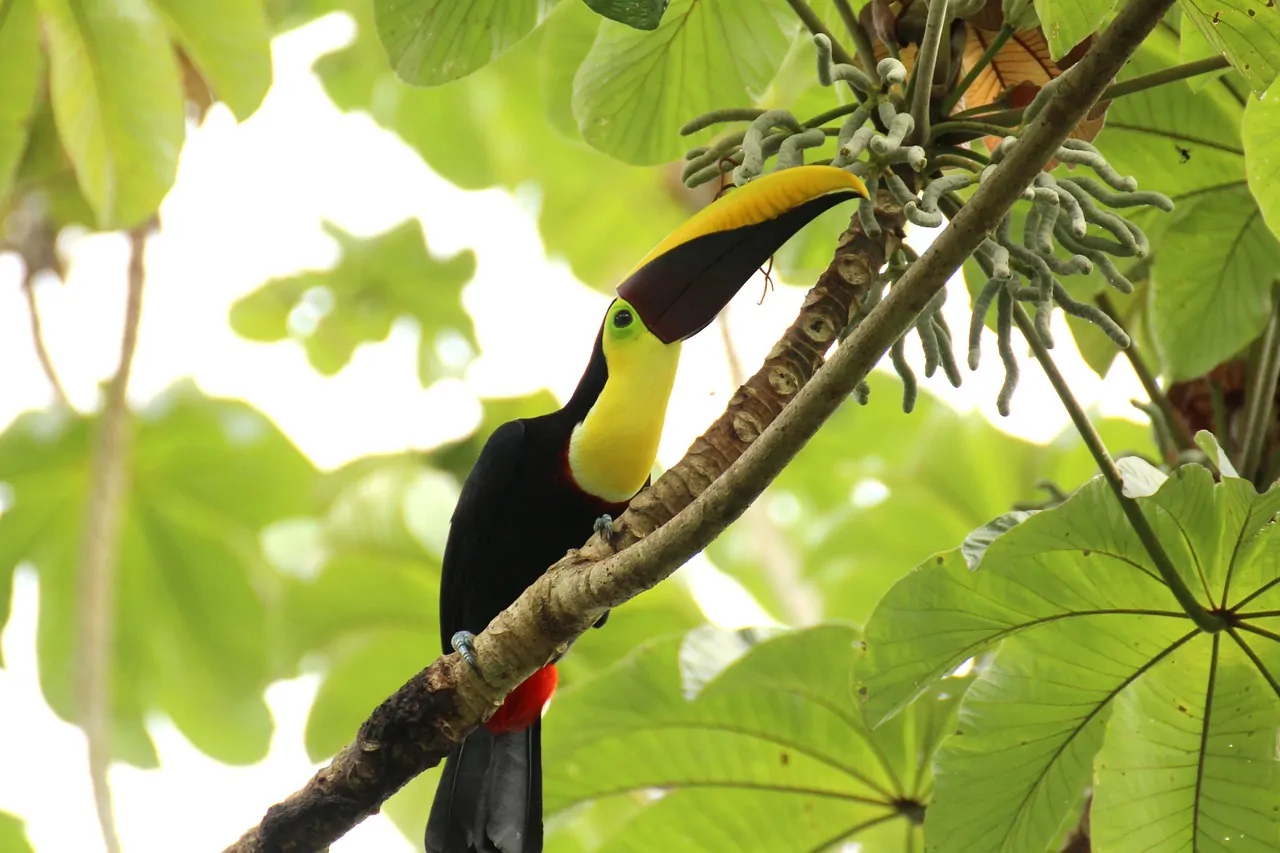
Every year, numerous environmental conferences take place, but why is the 16th United Nations Summit on Biodiversity (COP16), held in the fall of 2024 in Colombia, so significant? This summit represented a key milestone that brought about important COP16 biodiversity outcomes. At COP16, decisions were made that could fundamentally change the way our civilization approaches biodiversity conservation and the management of natural resources. Protecting nature is not just a topic for experts and environmental activists; it is an issue that affects each of us – our future, the lives of all living organisms on Earth, and ultimately our existence.
At COP16, those in charge of decision-making on nature conservation gathered – approximately 15,000 delegates attended, including more than 100 government ministers and several heads of state from nearly 200 countries. Their goal was to develop concrete commitments and mechanisms that can genuinely help halt biodiversity loss. These decisions are crucial not only for our generation but also for the generations to come.
What Was Decided at COP16?
The COP16 conference in 2024 resulted in numerous important decisions that will impact global biodiversity conservation and natural resource management. These decisions span various areas, from fair sharing of natural resources to financing nature protection. For us as individuals, these decisions represent concrete steps that should ultimately affect the quality and safety of our daily lives, as well as those of future generations – from improving the protection of natural ecosystems to taking greater responsibility for our natural heritage. Let’s briefly review them, with some explained in more detail:
1. Cali Fund – Fair Sharing of Benefits from Genetic Resources
The Cali Fund, officially approved at COP16, aims to ensure fair sharing of benefits derived from the use of genetic material from living organisms. This fund addresses situations where biotechnology companies use genetic material from plants or animals to create new products, such as medicines, genetically modified crops, or various biotechnological applications. These genetic data may include DNA samples from plants or animals used for research or commercial product development. The Cali Fund will ensure that countries providing these samples (such as the Amazon rainforest or biodiversity hotspots in Africa) receive compensation for providing these valuable genetic resources. In this way, fair sharing of benefits from the use of natural resources will be ensured, preventing these countries from being left without compensation. Until now, these countries have not received a fair share of the profits generated from this genetic material, making the Cali Fund a key step in protecting natural resources.
2. Strengthening the Role of Indigenous Communities in Nature Conservation
COP16 marked significant progress in strengthening the role of indigenous communities in decision-making processes related to natural resources. These communities, who have traditionally protected biodiversity in their regions, will now gain the right to express their views and influence policies related to nature conservation. This step is crucial for fairness and for recognizing the traditional knowledge of indigenous peoples in the development of global conservation policies. While there were platforms and mechanisms before COP16 that allowed indigenous communities to voice their opinions, they were not as strong or binding. Some countries and organizations had local or regional mechanisms for involving indigenous peoples in decision-making processes, but these were not globally coordinated and often lacked legal power to influence broader political decisions. Therefore, even though such mechanisms existed, they did not carry the same weight or visibility as the new decisions from COP16, which have global validity. This global platform established at COP16 will now have greater power and the ability to influence decisions at the international level.
3. Progress in Addressing Synthetic Biology Issues
Synthetic biology, which involves the creation of new organisms through biotechnology, was a topic of discussion at COP16. Natural ecosystems can be threatened if synthetic organisms interact with native species. At COP16, decisions were made regarding the regulation and control of this technology to ensure that synthetic organisms do not negatively impact existing biodiversity.
4. Invasive Species
Invasive species, which are not native to a given area, can be highly harmful to local fauna and flora. At COP16, decisions were made regarding the monitoring and control of invasive species that spread to new areas and damage natural ecosystems. This step will help protect native species and prevent harm to biodiversity.
5. Biodiversity and Climate Change
Climate change and biodiversity are inseparably linked. COP16 reached a consensus that protecting biodiversity is essential to mitigating climate change. Ecosystems, such as forests, wetlands, and oceans, play a key role in regulating the climate, and their protection is necessary to mitigate global climate impacts.
6. Strengthening Technical and Scientific Cooperation
At COP16, the need for technical and scientific cooperation between countries on nature conservation was recognized. This step means improving the sharing of technologies, knowledge, and research that will help countries adapt to environmental challenges. Mutual cooperation in scientific knowledge will help find effective solutions for nature conservation.
7. Ecologically or Biologically Significant Marine Areas
Ecologically or biologically significant marine areas (EBSAs) are areas that are crucial for protecting marine species and ecosystems. COP16 made progress in protecting these areas. Ensuring the protection of these areas will help stabilize ocean ecosystems and protect marine biodiversity from overexploitation and pollution.
8. Sustainable Management of Wildlife and Plant Conservation
COP16 achieved a significant step in sustainable management of wildlife and plant conservation. This decision is focused on ensuring that natural resources, such as wildlife and plants, are used sustainably without depleting or endangering their populations. Many species of wildlife and plants have faced and continue to face excessive hunting, harvesting, or habitat loss, leading to their extinction or critical endangerment. This decision means that countries have committed to the proper and regulated use of these resources so that their populations are not threatened, through sustainable management and conservation.
Key objectives of this initiative include:
- Reducing illegal trade in animals and plants, which poses a major risk to endangered species.
- Ensuring the protection of habitats for these species, especially in areas where they occur and during their migration.
- Supporting the recovery of endangered species populations, which are already on the brink of extinction, while also strengthening the protection of local ecosystems that are home to these species.
9. Biodiversity and Human Health
COP16 recognized the importance of protecting biodiversity for human health. Protecting nature impacts our health through clean air, drinking water, and food. This decision highlights the interdependence between biodiversity and health, emphasizing that protecting nature is essential for creating sustainable and healthy communities.
10. Risk Assessment and Impact Evaluation
COP16 decided that risk assessments and impact evaluations must be conducted before making new decisions related to natural resources. This step will ensure that decisions do not have a negative impact on ecosystems and that all new projects are evaluated for their environmental impact before being approved.
Not All Was Successful: Disagreement on Biodiversity Funding
Although COP16 brought many positive decisions, one of the failures was the lack of a global agreement on biodiversity funding. This issue remains one of the greatest challenges for effective nature protection. Without sufficient financial resources, the ambitious goals set for biodiversity conservation cannot be achieved. This lack of funding may slow progress in areas where it is most needed.
A closer look at this unsuccessful attempt to establish biodiversity protection funding can be found here: Le Monde.
Conclusion: Why COP16 Outcomes Matter

The results of COP16 have shown that protecting biodiversity is not only crucial for the health of our ecosystems but also for ensuring a sustainable future for all of us. The decisions that were made are concrete steps that we can follow and evaluate in the years to come. Whether it is fair sharing of genetic materials, strengthening the role of indigenous communities, or protecting endangered species, each of these steps will have an impact on how our planet develops in the coming decades. However, these decisions do not free us from responsibility. Protecting our biodiversity and nature is not only the task of governments or international organizations – it is a challenge for all of us, from our daily decisions to our involvement in environmental initiatives. Every step counts, which is why it is important to stay informed and active in matters of nature conservation.
